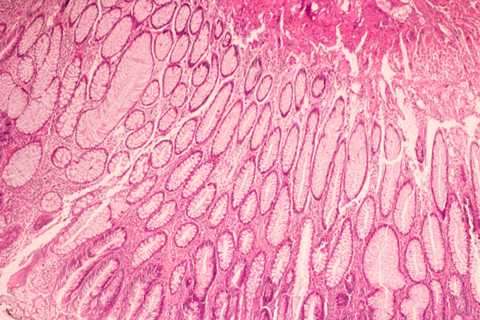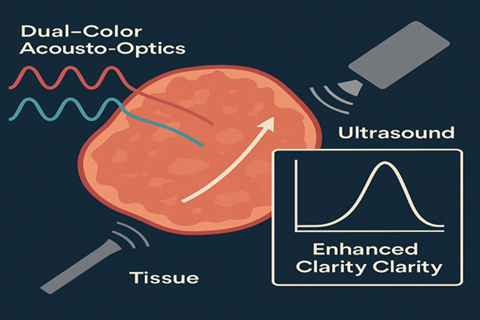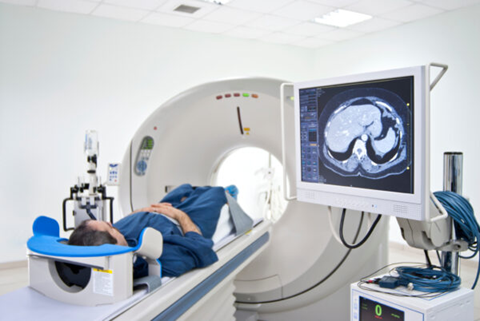Sponsored Content by Vitrek LLCReviewed by Maria OsipovaSep 18 2025
Advancements in medical and pharmaceutical imaging require accuracy, speed, and dependability—and GaGe high-speed digitizers are meeting these challenges. From improving breast cancer detection and cardiovascular research to enhancing ultrasound clarity and gamma imaging portability, GaGe digitizers are driving breakthroughs across biomedical applications.

Image Credit: Vitrek LLC
This article outlines real-world case studies demonstrating how GaGe technology enables advanced signal capture, resulting in clearer diagnostics, deeper insights, and faster discoveries in healthcare and life sciences.
Precision flow: Advancing breast health with 3D imaging: Detect low-velocity micro-vascular blood flow with clarity and diagnostic confidence
Challenge: Accurately mapping 3D blood flow in breast tissue is challenging due to detecting significantly low-velocity flow in small vessels, particularly when the flow is almost perpendicular to the imaging beam. Conventional imaging methods often struggle to differentiate these subtle signals from surrounding tissue.
How the GaGe digitizer was utilized: Researchers employed GaGe high-speed digitizers to acquire wideband ultrasonic signals with high resolution and speed. This allowed detection of low-velocity blood flow in small breast vessels through long pulse integration and accurate signal processing, enabling accurate 3D blood flow maps for earlier and more dependable diagnostics.

Image Credit: Vitrek LLC
High frequency ultrasound: Advancing breast biopsy imaging
Challenge: Traditional ultrasound guidance during breast biopsies frequently fails to accurately detect micro-calcifications—small but crucial indicators of early-stage breast cancer. Such limitations risk dangerous false negatives, putting patients at serious risk.
How the GaGe digitizer was utilized: A 64-element ultrasonic transducer array was embedded directly into the biopsy needle tip. Operating at 60 MHz, the high-resolution signals from each element were routed through a 64-to-1 multiplexer and digitized at 1 GS/s with a GaGe high-speed digitizer. This sophisticated configuration enabled precise, instantaneous monitoring of needle position, significantly boosting biopsy accuracy for targeting microcalcifications.

Image Credit: Vitrek LLC
Tissue clarity, amplified: Solving imaging ambiguity with dual-color acousto-optics
Challenge: Quantitative tissue imaging is restricted by poor contrast and spectral ambiguity, complicating differentiation of fine differences in biological structures. A two-color absorption interpolation method using acousto-optic technology to improve spectral precision was presented.
Extraordinary aspects of the application: GaGe high-speed digitizer cards captured ultrafast acoustic signals with outstanding resolution and timing accuracy. Their performance enabled precise reconstruction of dual-wavelength absorption data, delivering sharper images and more dependable tissue characterization for advanced medical imaging applications.

Image Credit: Vitrek LLC
Portable precision: Overcoming cryogenic gamma imaging limits in SPECT and PET scans.
Challenge: High-resolution gamma-ray detection is essential in medical imaging applications such as SPECT and PET. However, conventional germanium detectors require cryogenic cooling, making them bulky, expensive, and impractical for portable or bedside diagnostics. Ambient-temperature alternatives were presented, such as CdZnTe (CZT) detectors, which offer compact, clinical-friendly solutions but require excellent signal fidelity.
How GaGe digitizers were utilized: GaGe high-speed digitizers deliver the accuracy and speed required for the capture and analysis of fast gamma-ray signals from these detectors, enabling precise, instantaneous imaging without liquid nitrogen. This results in advanced, mobile gamma imaging systems suitable for contemporary medical settings.

Image Credit: Vitrek LLC
Sharper scans, lower noise medical imaging: Addressing FDML laser noise for sharper, more precise diagnostics
Challenge: Medical imaging methods such as Optical Coherence Tomography (OCT) depend on FDML lasers for rapid, comprehensive cross-sectional scans of tissues—critical in ophthalmology, cardiology, and oncology. However, FDML lasers are prone to wavelength jitter and spectral noise, which reduce image clarity and diagnostic precision. This study addressed these limitations by enhancing laser stability and spectral fidelity.
How the GaGe digitizer was utilized: GaGe high-speed digitizers captured ultrafast interferometric signals with exceptional accuracy, allowing measurement and correction of spectral instabilities. A 12-bit, 200 MS/s Gage card acquired the signal from a 100MHz bandwidth photo receiver used to track laser power. These results were used to compensate for power fluctuations in the optical interferometer signal employed to characterize the laser, producing sharper, cleaner OCT images that support medical professionals with more precise and dependable diagnostic data.

Image Credit: Vitrek LLC
High definition diagnostics: Enhancing medical ultrasound with high-frequency, high-speed signal capture
Challenge: Standard ultrasound systems, restricted by lower frequencies and slower signal acquisition rates, limit image resolution—particularly when visualizing small or complex tissue structures in medical diagnostics. This study examined how pairing high-frequency transducers with rapid data capture can significantly improve imaging detail.
Outstanding features of the application: High-frequency coded excitations were used to expand the dynamic range of ultrasonic imaging systems. Unlike traditional ultrasonic pulse excitation, a complex ultrasonic signal is produced by an Arbitrary Waveform Generator (AWG).
A 12-bit Gage card digitizes the received ultrasonic signal at 200 MS/s. While a standard ultrasonic signal can be analyzed exclusively in the analog domain, digitization is essential for coded signals, which require extensive Digital Signal Processing (DSP) to recover standard ultrasonic parameters.

Image Credit: Vitrek LLC
Imaging the unseen in biomedical studies: High-resolution ultrasound for small animal cardiovascular studies
Challenge: In biomedical research, small animal models are essential for investigating cardiovascular diseases and assessing novel treatments. Conventional ultrasound systems, however, often fail to capture the rapid, fine-scale dynamics of small hearts, such as those of mice. This study introduced an advanced, high-frequency ultrasound system optimized for small animal imaging.
Outstanding application features: GaGe high-speed digitizers enabled instantaneous acquisition of ultrafast, high-resolution data, exposing subtle cardiac structures and functions previously invisible. This resulted in a robust imaging platform that strengthens biomedical research and accelerates progress in human cardiovascular health.

Image Credit: Vitrek LLC
Ultrasound precision for medicine: Advancing biomedical imaging with PFDF-on-silicon transducer innovation
Challenge: High-resolution ultrasound is crucial in medical sectors such as ophthalmology, cardiology, and dermatology, but conventional transducer materials frequently lack both the sensitivity and clarity required at higher frequencies. Inconsistent manufacturing methods can also produce variable imaging performance. This study presented a novel approach to producing PVDF-on-silicon transducers, achieving thinner, more uniform layers with unparalleled acoustic features.
How the GaGe digitizer was utilized: GaGe high-speed digitizers validated these enhancements—capturing the fine, high-frequency ultrasonic signals essential for measuring and optimizing transducer performance. This resulted in sharper, more dependable imaging that supports cutting-edge biomedical diagnostics and provides medical professionals with more precise and reliable diagnostic information.

Image Credit: Vitrek LLC
About Vitrek LLC
Since 1990, Vitrek has provided innovative global solutions for high voltage test and measurement including electrical safety compliance testers, multi-point high voltage switching systems and graphical power analyzers. The recent acquisition of MTI Instruments expands their test and measurement portfolio to include non-contact measurement devices, portable signal simulators and calibrators, semiconductor/solar metrology systems and turbine engine/rotating machine balancing. The acquisition of DynamicSignals’ portfolio adds a wide array of board-level data acquisition and integrated real-time RF record/playback system solutions from GaGe, KineticSystems and Signatec. Vitrek also supplies precision high voltage measurement standards to national laboratories and calibration labs around the world. This unique and complementary combination of product and engineering capabilities positions Vitrek as a leading provider of test solutions serving the photovoltaic, medical equipment, power conversion, electrical/electronic component, semiconductor, aerospace and appliance industries. Vitrek is an accredited ISO 17025 Calibration Laboratory.
Sponsored Content Policy: News-Medical.net publishes articles and related content that may be derived from sources where we have existing commercial relationships, provided such content adds value to the core editorial ethos of News-Medical.Net which is to educate and inform site visitors interested in medical research, science, medical devices and treatments.